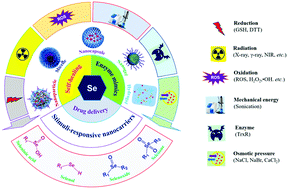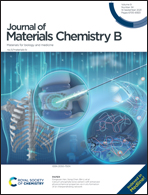Recent developments in selenium-containing polymeric micelles: prospective stimuli, drug-release behaviors, and intrinsic anticancer activity
Abstract
Selenium is capable of forming a dynamic covalent bond with itself and other elements and can undergo metathesis and regeneration reactions under optimum conditions. Its dynamic nature endows selenium-containing polymers with striking sensitivity towards some environmental alterations. In the past decade, several selenium-containing polymers were synthesized and used for the preparation of oxidation-, reduction-, and radiation-responsive nanocarriers. Recently, thioredoxin reductase, sonication, and osmotic pressure triggered the cleavage of Se–Se bonds and swelling or disassembly of nanostructures. Moreover, some selenium-containing nanocarriers form oxidation products such as seleninic acids and acrylates with inherent anticancer activities. Thus, selenium-containing polymers hold promise for the fabrication of ultrasensitive and multifunctional nanocarriers of radiotherapeutic, chemotherapeutic, and immunotherapeutic significance. Herein, we discuss the most recent developments in selenium-containing polymeric micelles in light of their architecture, multiple stimuli-responsive properties, emerging immunomodulatory activities, and future perspectives in the delivery and controlled release of anticancer agents.



 Please wait while we load your content...
Please wait while we load your content...